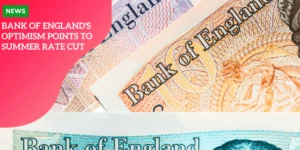Understanding the Cost of Living Crisis: What Long-Term Inflation Data Reveals
A Closer Look at the Numbers
When headlines declare that inflation is down to 3.4%, it’s easy to believe the cost of living crisis might be fading. However, this headline figure hides the reality many households still face: rising prices don’t simply reset once the rate drops. Instead, the high costs from the past few years are now a permanent part of everyday expenses.
Annual inflation rates focus on how much prices have changed in the last 12 months. While useful, this ignores the much larger 25% increase in prices seen over the past four years. Households feel strain not just from recent shifts but from the lasting jump caused by major events like the energy shock and geopolitical conflicts.
Why Perspective Matters
Short-term data can’t capture the stress that builds as prices remain high year after year. This disconnect means the official stats might look better, but families still face stretched budgets. As we dig deeper into the facts, it becomes clear how important it is to embrace a broader view when understanding economic pressure.
The Long View: Four Years of Rising Prices
Inflation Isn’t Just About the Last Year
When we hear that annual inflation has cooled to 3.4%, it can sound reassuring. Yet this alone doesn’t capture the strain families feel each week. Over the past four years, prices have actually climbed 25%—a much bigger jump than any annual rate might suggest. That number reflects changes that stick with us: most of those price hikes—sparked by the 2022 energy shock and global turmoil—didn’t fade. Instead, what shot up has largely stayed up, making every trip to the store or pay day feel squeezed.
A Four-Year Lens Matches Real Experiences
It’s easy for economists to focus on year-over-year changes, but for everyday people, memories stretch further back than just last summer. If essentials like groceries or transport are up a quarter since 2020, that’s what actually drains budgets and alters choices. This longer view feels truer because it measures price changes against our lived experiences, not just technical trends.
The gap between falling headline rates and persistently high costs sets the stage for understanding why official stats often feel hollow at home.
Why Annual Inflation Rates Can Be Misleading
Looking Beyond Headlines
It’s easy to be comforted by the recent annual inflation rate of 3.4%. On paper, this sounds like a return to normal, and many experts and politicians point to it as proof the worst is behind us. But for everyday people, these numbers often feel out of step with reality. The main reason is simple: annual statistics only capture how prices have changed in the past year, not what’s happened over a longer stretch.
The “Recent Memory” Effect
When you buy groceries, fill your car, or pay bills, you recall what things cost a few years ago, not just last year. Over the last four years, prices have climbed by a whopping 25%, mostly driven by the big spikes in 2022. Those increases weren’t reversed—they stuck. So, even if prices stop rising as quickly, they’re still much higher than people remember.
Cumulative Strain Matters Most
Focusing only on year-over-year rates masks this longer-term pain. The so-called “recent memory” rate reflects how families budget and make choices. If wages haven’t kept up over that same span, the pressure is real. This explains why there’s a disconnect between the calm of official data and the anxiety many households feel.
Understanding this gap is crucial as we look at how high prices continue to shape household decisions and well-being.

Beyond the Numbers: Real-World Impact on Households
Uneven Strain Across Socioeconomic Groups
When you look past the annual inflation numbers, a more personal picture emerges. Not all households are hit the same way by high prices. For lower-income families, a larger share of income goes toward essentials—like food and energy—which have seen sharp, lasting increases. Middle and higher-income groups may feel the pinch, but often have more room to adjust spending or dip into savings. This means economic pain is not felt equally.
The Emotional Cost of Prolonged High Prices
Living with persistent inflation is draining. Many people feel anxious as their paychecks simply don’t stretch as far as they used to. Over time, this erodes consumer confidence, making people more cautious about big purchases or even daily expenses. The stress of tightening budgets, especially when prices stay elevated, can linger long after headlines declare inflation is “easing.”
Why Statistics Fail to Capture the Full Experience
Official numbers measure price change, but don’t always match what people feel. After all, a 3.4% annual rise may sound minor, but for families facing a 25% increase over four years, the struggle feels far more intense. This gap between statistics and lived experience is why many households are still feeling squeezed, despite upbeat economic updates.
With families under continued stress, it’s important to understand the bigger forces keeping prices high and uncertain.
Global Factors Driving Continued Inflation Pressure
Geopolitical Shocks and Their Ripple Effects
Global events have a big say in how prices behave. When Russia invaded Ukraine in 2022, energy prices soared and stayed high, hitting families hard. That sharp increase isn’t a distant memory—it’s baked into what we pay now. More recently, conflict in the Middle East has created turmoil in oil markets. In June alone, oil prices jumped by 18%, making everything from fuel to food more expensive as these extra costs trickle through supply chains.
The Shifting Sands of Globalization
For years, globalization helped keep prices low. Production moved to cheaper countries, lowering costs for everyone. But that trend is starting to reverse. With more trade barriers, new tariffs, and manufacturers moving operations closer to home, the cost of making and moving goods could rise. That means future inflation may not settle down as quickly—or drop at all.
Economic realities are increasingly shaped by these global uncertainties. Understanding the true impact of inflation means recognizing how interconnected and unpredictable our world economy has become.
Economic Uncertainty: Why Forecasting Is Challenging
The Trouble with Predicting Inflation
Forecasting where inflation will go next isn’t as simple as looking at the latest data or past trends. Global events have made predicting future price changes much tougher. The recent conflicts in the Middle East have sent oil prices soaring—up 18% in just June—which soon shows up as higher costs at the pump and in stores. But with these situations changing fast, we don’t know how long prices will stay high or if they might jump again.
Trade, Tariffs, and a Shifting World
Another challenge comes from changes in global trade. In the past, globalization helped lower prices because companies could make goods more cheaply abroad. Now, with countries raising tariffs and bringing manufacturing back home, these changes introduce new costs. If tariffs stick, prices might climb even higher, making inflation tough to keep in check.
Expect Economic Ups and Downs
All these factors—geopolitical tensions, trade changes, and energy market swings—make it hard to build reliable economic forecasts. Even experts admit these big changes are hard to model, and volatility is likely to continue.
As uncertainty remains high, being prepared for ongoing economic shifts has become more important than ever.
Looking Forward: Is Relief in Sight?
The Outlook for Inflation
The Bank of England predicts that inflation could fall back to its 2% target in the next year or two. With the annual inflation rate dropping from a high of over 10% in 2022 to 3.4% now, it’s tempting to feel optimistic. If you just look at these numbers, things seem to be heading in the right direction. But this isn’t the full picture. Price increases from a few years ago haven’t reversed—they’ve simply stopped growing as quickly. So while the pain isn’t getting worse at the same rate, the squeeze is far from over for many households.
What Could Change the Path?
Several risks could upend these projections. Ongoing conflict in the Middle East has already led to sharp oil price spikes—petrol and transport costs may rise with future disruptions. There’s also uncertainty around global trade barriers and the possible effects of companies moving production away from traditionally low-cost regions. These shifts are very hard to predict, but even small changes could add pressure to household budgets.
Planning for Uncertain Times
Given the unpredictability ahead, it’s wise for families to remain cautious. Building a financial cushion, keeping an eye on spending, and being flexible with budgets are all smart moves. While some forecasts are encouraging, the economic environment is still shaped by volatility and global events, making stable relief difficult to count on.
Conclusion: Reframing How We Discuss the Cost of Living
Looking Beyond the Headlines
When inflation is reported as dropping, it’s easy to believe that financial pressures are easing. However, this narrow focus can be misleading. Although the annual inflation rate now stands at 3.4%, prices are still 25% higher than they were four years ago. These increases remain locked into the economy, making life persistently more expensive for households. The reality is, a crisis doesn’t end just because the pace of price rises slows down.
A New Lens for Understanding the Crisis
To really capture what people feel day to day, we need to see the full picture. That means considering not just year-over-year changes, but how much costs have stacked up over time. For many, the “recent memory” of price surges shapes their financial decisions more than official annual rates ever could.
Toward More Meaningful Economic Conversations
Discussing the cost of living should be about more than statistics. It should reflect real experiences. By embracing a broader view, we can better understand the ongoing challenges families face and prepare for the shifts that lie ahead.
| Category | Official Data View | Household Reality |
|---|---|---|
| Inflation Rate | Inflation has cooled to 3.4% in 2024. | Prices are still 25% higher than in 2020 and haven’t dropped. |
| Daily Costs | Inflation is slowing—so purchasing power is improving. | Groceries, fuel, and utilities remain unaffordable for many. |
| Economic Messaging | Experts point to stability and progress. | Families feel anxious, stressed, and under continuous pressure. |
| Time Frame | Year-over-year comparisons dominate reporting. | People remember 4-year price jumps—real-world inflation is cumulative. |
| Wage Growth | Wages have increased modestly in recent years. | Incomes have not kept pace with rising household expenses. |
| Public Sentiment | Optimism about returning to 2% inflation targets. | Persistent economic anxiety despite improved headline stats. |
| Global Drivers | Markets are stabilizing, and energy shocks are fading. | New global conflicts and tariffs keep pressure on household costs. |
| Long-Term Outlook | Inflation may normalize in the next 12–24 months. | Even if inflation slows, elevated prices are now permanent. |





